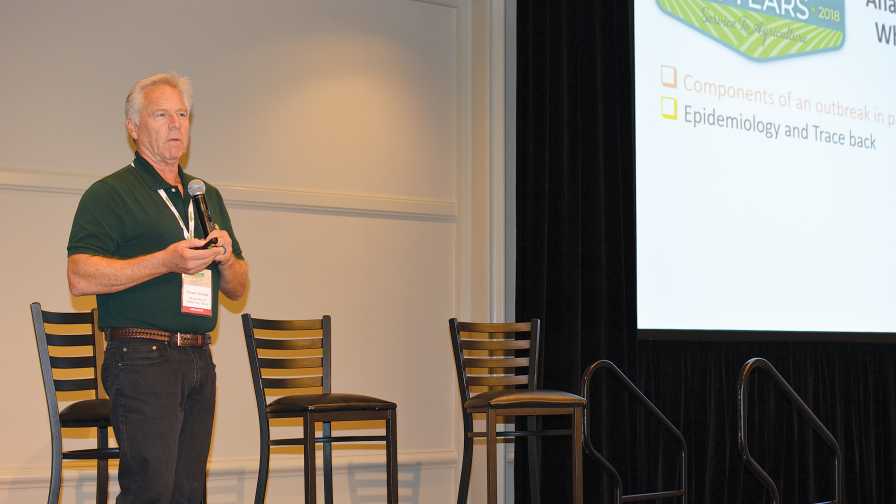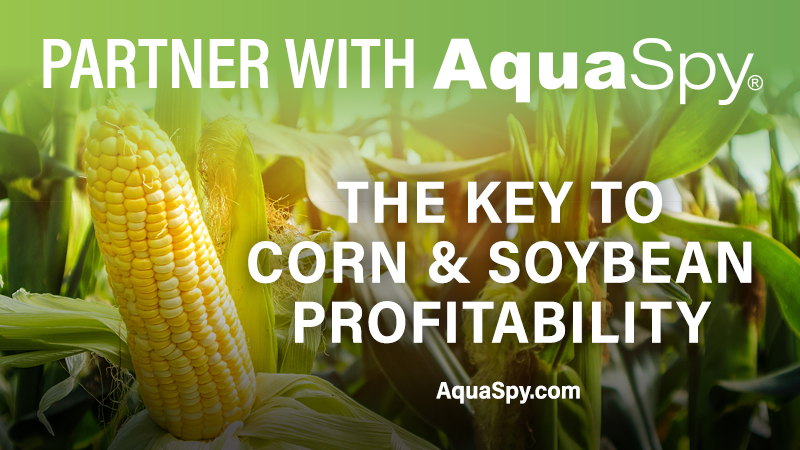The Road to Food Safety Traceability is Complex

Trevor Suslow, Extension Research Specialist with University of California, Davis, told the Florida Fruit and Vegetable Association 2018 Annual Convention attendees that planning, coordination, communication, and execution is ultimately going to protect the produce industry and its consumers.
Photo by Frank Giles
This spring’s multistate recall of romaine lettuce after a foodborne illness outbreak caused by E. coli reminded the specialty crop industry of the ongoing food safety challenges it faces, despite the many improvements and safeguards that have been put into place over the years.
The outbreak, which appeared to be over near the end of June, sickened 210 people in 36 states, causing 96 hospitalizations and five deaths. The source of E. coli appeared to originate from canal water in the Yuma, AZ, growing region. There were numerous lettuce fields associated with the outbreak not far from a large cattle-feeding operation.
During the Florida Fruit and Vegetable Association’s Annual Convention in September, Trevor Suslow, an Extension Research Specialist with University of Calif-ornia, Davis, provided a presentation on the anatomy of outbreaks and what we have learned from them. He touched on the Yuma romaine outbreak and others in his presentation.
Suslow said multistate outbreaks are far less common than isolated cases, but they are far more serious. Only 3% of foodborne outbreaks are multistate, but they cause more than their fair share of outbreak sicknesses, hospitalizations, and deaths.
He said the common timeline of an E. coli outbreak is about 15 days from a person getting sick to the case being solved. Listeria can take 60 to 70 days to become ill after exposure, which makes an investigation even more difficult. That is what made the 2011 Jensen Farms cantaloupe listeria outbreak so bad and difficult to trace. That case resulted in 33 deaths.
Lessons Learned
Suslow said that while processes have improved to reduce the risks, continued multistate foodborne illness outbreaks involving specialty crops show there is more work ahead. And, he added multistate outbreaks typically trace back to the farm or packing facility as the point of origin.
“Intensive outbreak investigations have made food production safer, but continued improvement of both known and new science is clearly still needed,” he said. “The lesson learned on things we feel should be incorporated in everyday business plans as it relates to produce safety to hopefully protect the industry individually, and as a whole, seem very difficult to anchor. It is very difficult to identify those components [of the problem], communicate it broadly, and then have people respond and develop systems and incorporate that knowledge to improve their food safety program.”
New technology, like whole genome sequencing, is much faster and precise to include or exclude individuals who are ill from a common, ongoing outbreak. But, it still must work in conjunction with the other legs of an outbreak investigation. The interview process, and how well it is done, is critical. Then there’s the traceback and trace forward as the industry looks for key points of convergence and how all these victims and cases relate to each. Finally comes onsite investigations, unless a common source is identified quickly.
Suslow said this all is extremely complex, and that’s why outbreaks remain a problem. That was illustrated in the spring romaine lettuce outbreak. Even with perfect traceability to identify the problem quickly, there are larger questions that must be faced like: How close should produce farms be to potential contamination sources like a larger cattle feeder operation? What do we do about water? Suslow said the question of water as a means of contamination is going to continue to be an important conversation moving forward.
What to Do?
Suslow said this challenge will require some new ways of approaching food safety and traceablity. He said that academia, and parts of the regulatory world, have become so tied to peer-reviewed science on the causes of outbreaks and resulting actions to take, that it can become a crutch for inaction. And, the industry itself needs to place more emphasis on teaching risk analysis on the farm and in the food chain as a core tool for the boots on the ground.
He added better communication is critical, especially considering the many moving parts of the food chain.
“Planning, coordination, communication, and execution is ultimately going to protect the produce industry and our consumers,” he said.
Walmart Betting on Blockchain
In the wake of this year’s Arizona romaine lettuce E. coli outbreak, Walmart and Sam’s Club have asked their leafy green suppliers to trace their products back to the farm using blockchain technology. According the retailers, suppliers are expected to have these systems in place by fall 2019.
Blockchain is a cloud-based traceability system that allows instant, digitized sharing of data in a secure and trusted way. The intention is to provide a means for much faster traceback of the source of an outbreak and, thus, avoid outbreaks like that in Arizona.
This is another indication the retail industry is taking action that might supersede regulatory authorities when it comes to food safety. Other giant food companies will follow Walmart’s lead in requiring blockchain traceability.










